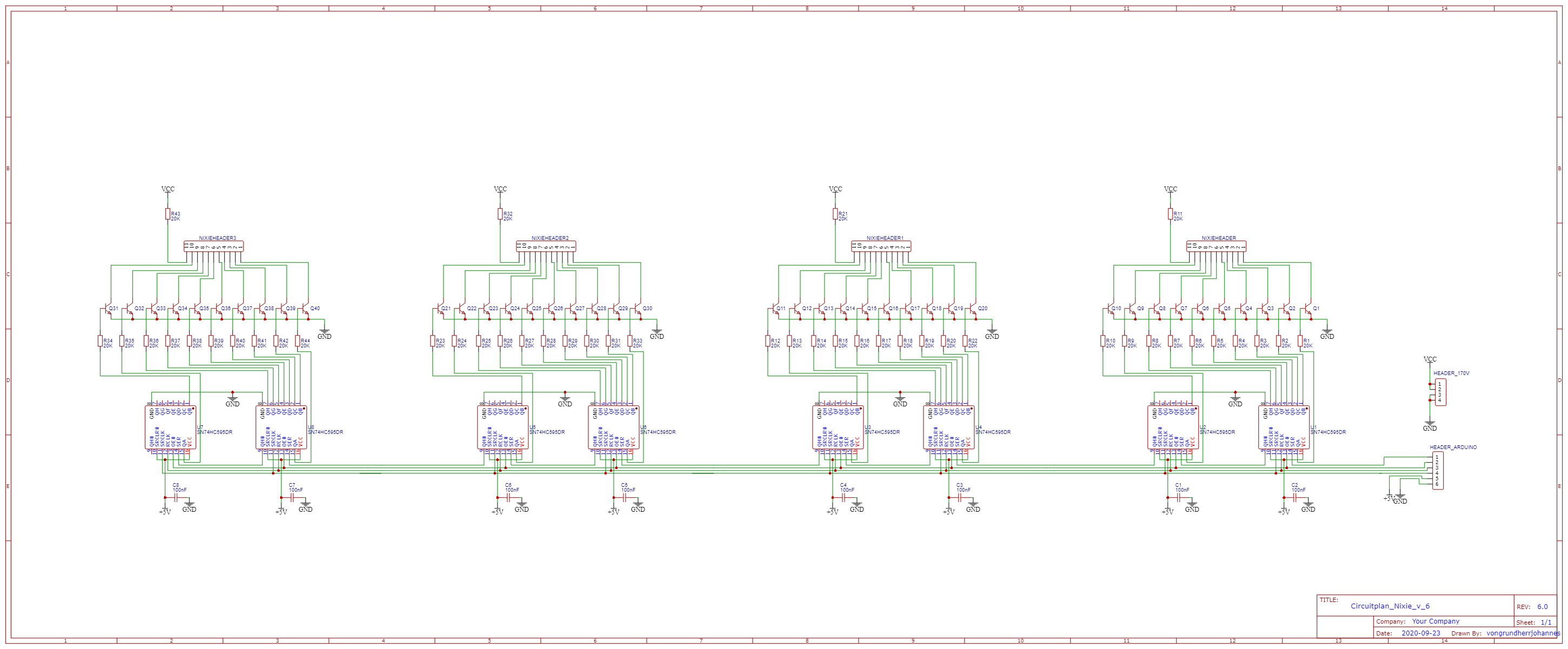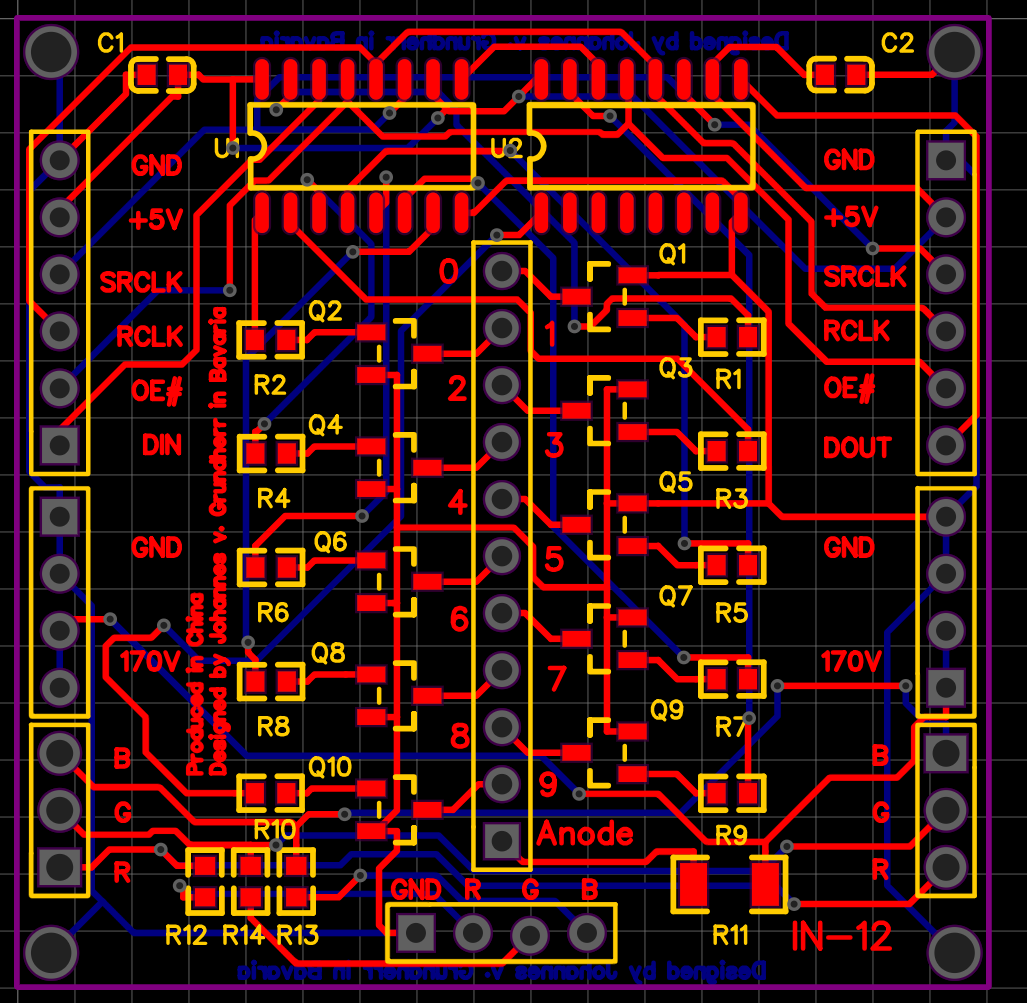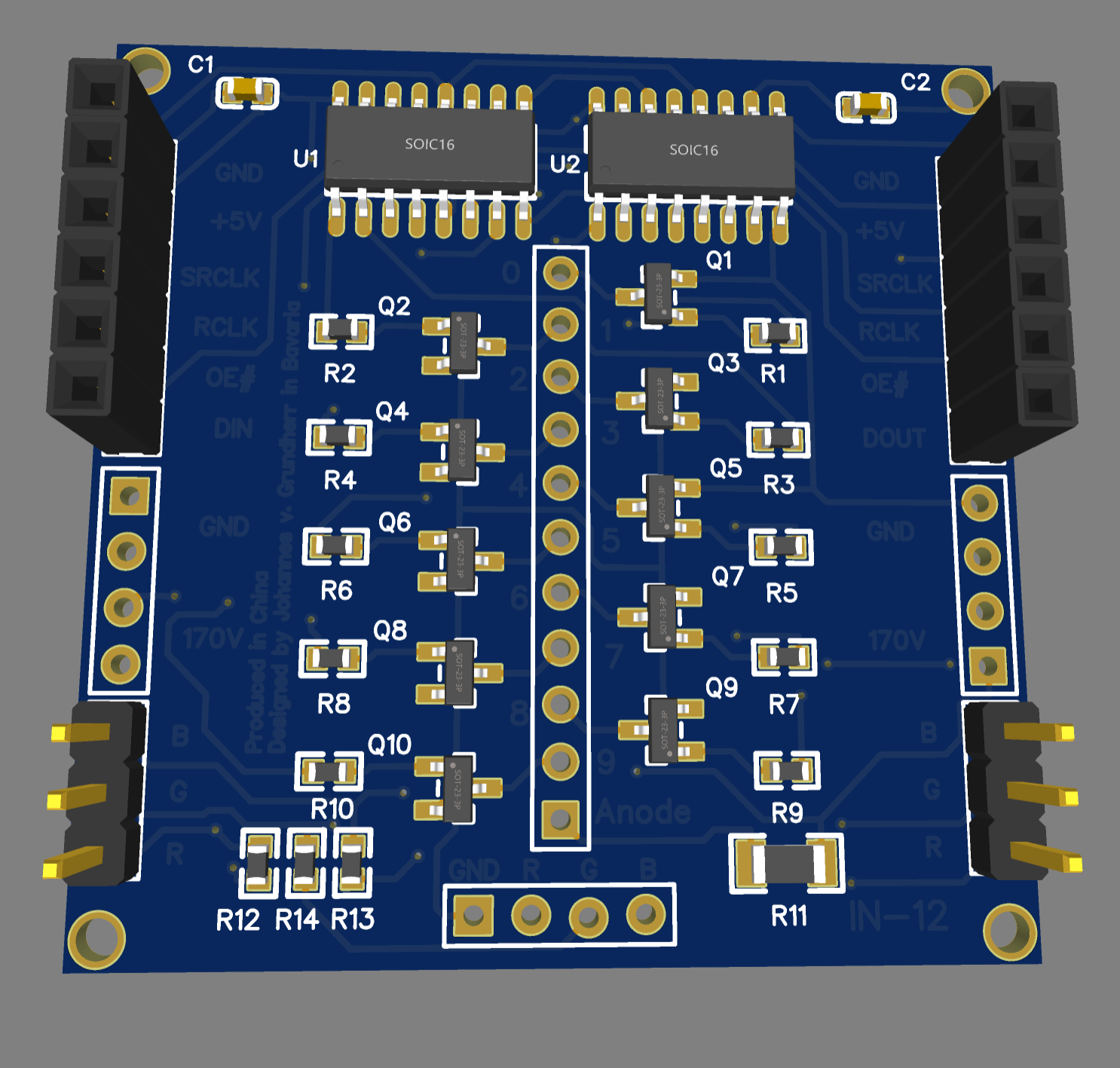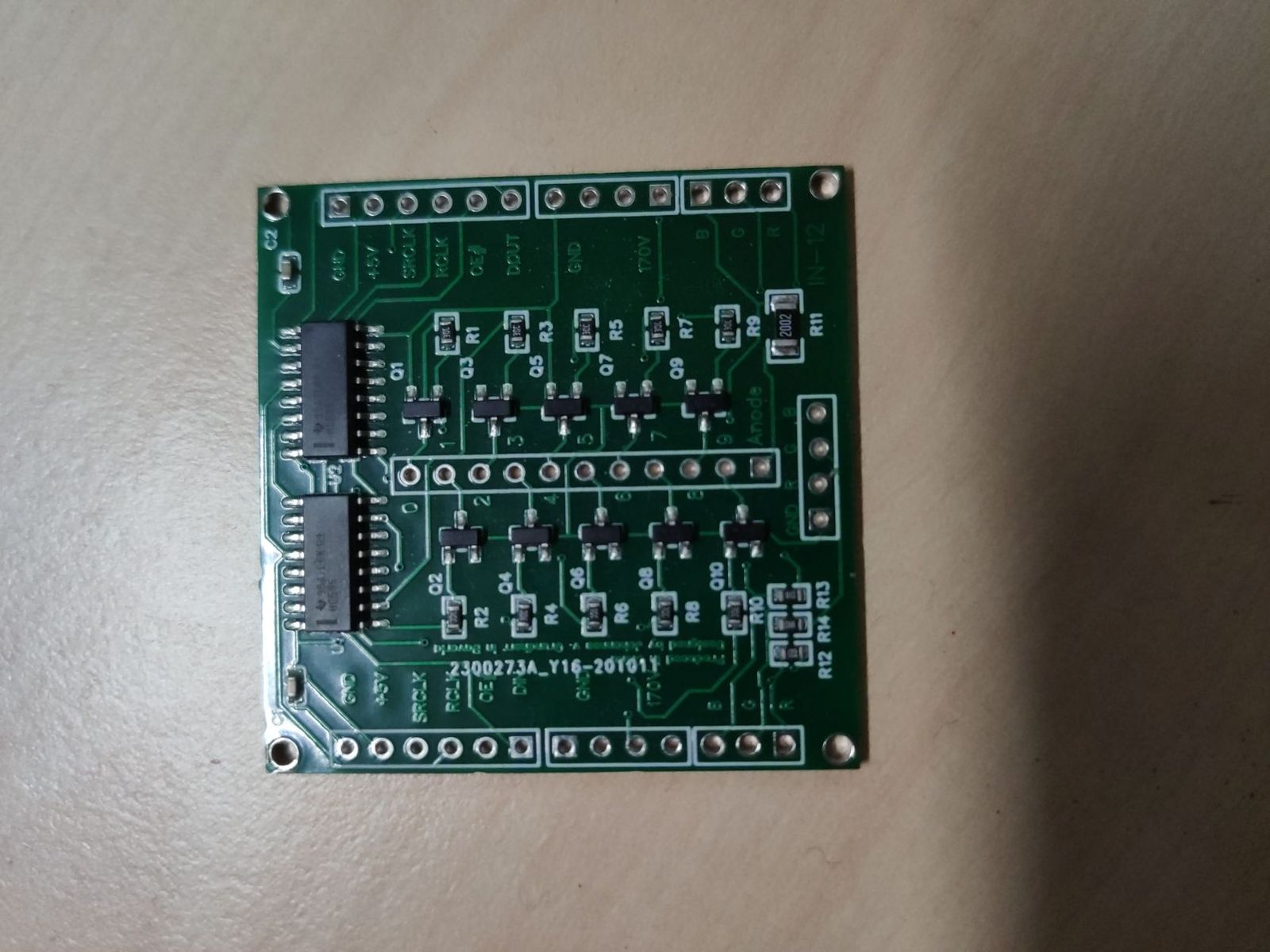One might recognize them from the bomb-defusing scene in the Bond movie ‘Goldfinger’ or the Divergence Meter from ‘Steins;Gate’. In short, they consist of ten (0-9) wires glowing neon yellow in a vacuum tube. First replaced by seven-segment displays, they are becoming increasingly popular nowadays due to their aesthetic appeal.
While there are many kits available online, where’s the fun in buying one?
Designing the Circuit:
The main difficulty in a Nixie clock lies in its operating voltage, which is around 170V.
To overcome this challenge, I decided to use two circuits - one high-powered circuit to drive the tubes and one low-powered circuit for switching the power to the digits on and off. For switching, I used a common shift register - the SN74HC595DR, along with some 20k Ohm resistors and high-power transistors.

As you can see, using a shift register allows us to daisy-chain as many tubes together as we like in theory. Therefore, I tried to make the PCB as modular as possible, with the input on the left and output on the right.
Note that I added RGB just for the sake of it; having LEDs under a Nixie clock is pure blasphemy.


Making it Real:
Since most of the parts are SMD components that are too difficult to solder by hand, I switched to EasyEda mid-development because they had a list of parts that JLCPCB could assemble.
While redoing the layout, a little mishap happened - the description was in the solder mask and not the silkscreen mask… F.
Apart from that, it turned out great:

Now, for the moment of truth - does it actually work? To drive the shift registers, I used an Arduino Nano, and for the 170V circuit, I used a high-power supply from eBay.
See for yourself:
 Since it looks rather barebones for now, my plan was to go to my local FABLAB @FAU and build a wooden case for it. However, due to the pandemic, the FABLAB has been closed, so this project is not yet finished.
Since it looks rather barebones for now, my plan was to go to my local FABLAB @FAU and build a wooden case for it. However, due to the pandemic, the FABLAB has been closed, so this project is not yet finished.
To be continued…